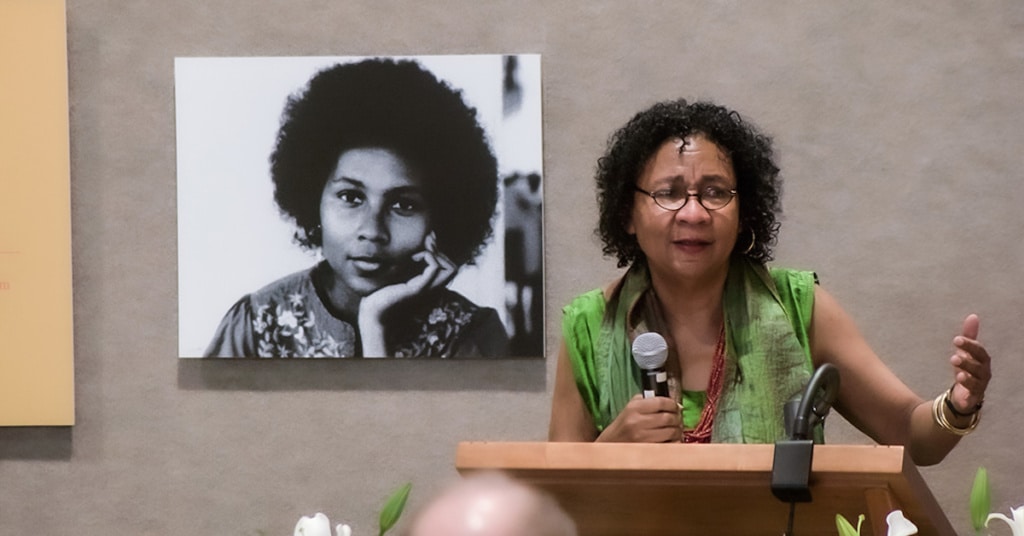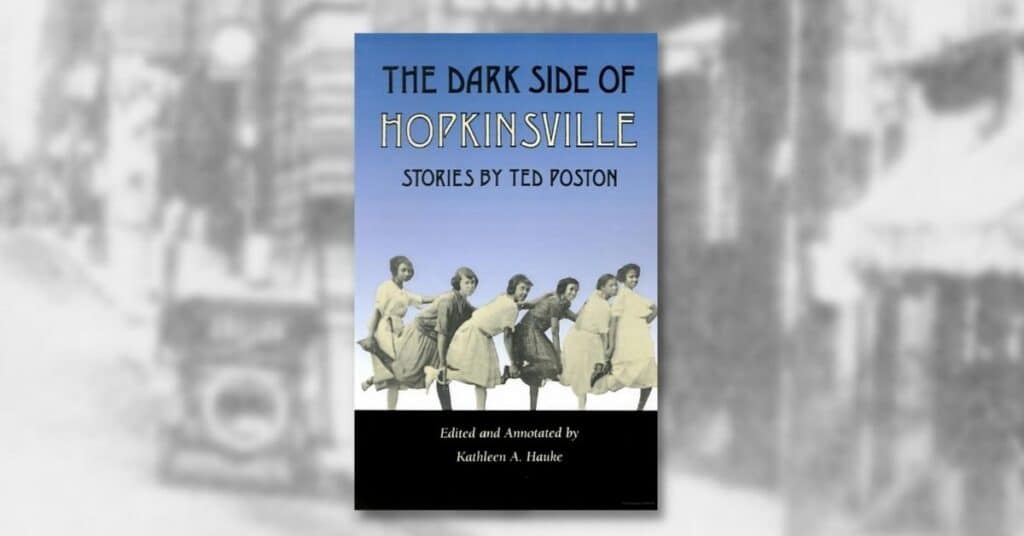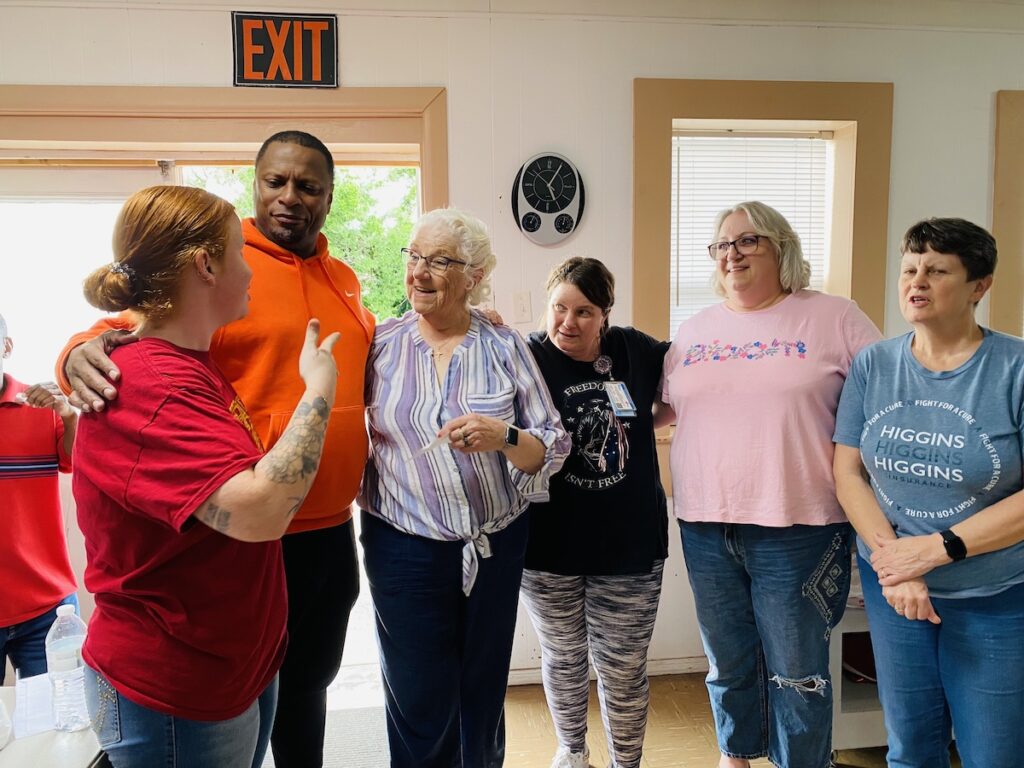Editor’s note: This column, which first ran in The Sunday Brew newsletter, comes from remarks Hoptown Chronicle editor Jennifer P. Brown prepared for a talk about famous people from Hopkinsville and Christian County. The talk was given Thursday at the Alhambra Theatre for the Leadership West Kentucky class, which had 28 of its members in town for a day of presentations organized by Christian County Chamber of Commerce President Taylor Hayes.
If we are going to talk about notable people from Hopkinsville and Christian County, I want to start with a woman named Elizabeth, daughter of this town’s first settler, Bartholomew Wood, who staked a claim for a Revolutionary War land grant of 1,200 acres in the 1790s.
Bartholomew Wood intended to have this town named for Elizabeth — one of 11 children born to Bartholomew and Martha Wood. And so for a brief time around the turn of the 19th century, this place was known unofficially, at least in the Wood family, as the town of Elizabeth.

But there was a problem, as you might have guessed. Another fledging town in Kentucky — at Hardin County east of us — had already been named Elizabethtown.
To avoid any confusion, Frankfort stepped in and chose a different name — Hopkinsville, in honor of a Revolutionary War veteran, Gen. Samuel Hopkins.
The county is also named for a Revolutionary War veteran, Col. William Christian.
As far as we know, neither Hopkins nor Christian ever set foot in this town or county. Hopkins lived in Henderson County for a time. And Christian was in the Louisville area. He died in a fight with Wabash Indians near present-day Jeffersonville, Indiana.
Our nickname
Every time I hear about Elizabeth Wood it feels like a great missed opportunity. Gen. Hopkins did not have the kind of connection to this town that Elizabeth did.
But being named Hopkinsville opened up a different kind of opportunity for us — a nickname that is now known far and wide.
We are Hoptown.
Speaking of ournickname and — or, if you will, our notoriety — it’s interesting to hear how outsiders view our town. Here’s an example. Several years ago I was checking into a beautiful hotel in downtown Nashville with friends for a girls’ weekend. The hotel was the kind of place that still had a bellman and other employees who will help carry your bags to your room.
As our group wedged into the elevator, the hotel employee helping with our luggage asked me where I had traveled from.
“I’m from Hopkinsville, an hour north of here,” I said.
The man, who appeared to be in his 70s, immediately lit up and responded with a seductive tone as he sang, “Hoptown.”
Nothing else needed to be said. He’d obviously had a good time at some point in our city.
A musical place
Did you know that a highly regarded Americana musician named Darrell Scott wrote a song about Hopkinsville?

Now, I cannot sing. You would not want me to sing, but let me share a few of the lyrics from the song “Hopkinsville.”
If you can’t find work, work finds you
You know daddy didn’t raise no welfare fool
Said there’s a lot worse things a boy could do
Than straddle an iron beam
So I build this bridge ’til it’s complete
And I’ll take the steel toes off my feet
And give myself a one way seat
On that train to Hopkinsville
I’m going back to Hopkinsville
I’m going back, you know I will
Only 21 working days
Until I’m with my love in Hopkinsville
Scott said in an interview I once read that when he wrote the song he was imaging a construction worker in Nashville who passed time dreaming about getting some time off to be with a woman n Hopkinsville.
While we’re talking about musicians, I’ll mention two luminaries from Hopkinsville.

The first is John Brim, a bluesman born here in 1922, who became a well known figure in the Chicago music scene alongside renowned artists such as Muddy Waters and Bo Diddley.
One of his best known songs was “Ice Cream Man.” It has been covered by several other musicians, including the rock band Van Halen.
Also from Hopkinsville is Steve Gorman, the former drummer for the Black Crowes, who rose to fame in the mid-1980s. Gorman, who graduated from University Heights Academy in 1983, was the youngest in a big family. His mom, Imelda Gorman, still lives in Hopkinsville.

A few years ago we finally got to see Steve on the Alhambra stage. He played in a concert with his new band, Trigger Hippy, just before the pandemic shut things down in 2020.
The ‘Sleeping Prophet’
Christian County’s most famous native son has to the clairvoyant Edgar Cayce.
Born in 1877 in the southern end of the county, Cayce became known as The Sleeping Prophet because of his apparent ability to prescribe medical treatments while in a self-induced trance. He gave thousands of readings, many of which are transcribed and maintained at the Association for Research and Enlightenment at Virginia Beach, Virginia.

It is difficult to explain Cayce’s gift. I’ve only recently come around to believing that he did have psychic abilities that science, as we know it, cannot explain.
You can learn more about Edgar Cayce and his remarkable wife, Gertrude, at the Pennyroyal Area Museum.
Literary talent
This community’s most famous native daughter has to be Gloria Watkins, the feminist writer and academic scholar better known by her pen name, bell hooks. She wrote some 40 books — mainly about feminism, race and class, but also on themes of community and love and rural people. Her books hold equal appeal for academics and everyday readers.

bell hooks had several teaching positions around the country but chose to return to Kentucky, at Berea College, for her last academic post. She died in December 2021 — and her memorial service the following spring in this theater was one of the most inspiring events I have personally witnessed at the Alhambra.
The speakers at the memorial service included three of Kentucky’s greatest living writers — Wendell Berry, Crystal Wilkinson and Silas House — along with old high school classmates and family members.
Recently, a street in downtown Hopkinsville was named for bell hooks, and a room with many of her personal belongings and furniture was dedicated at the Pennyroyal Area Museum.
Another writer from Hopkinsville was Ted Poston, who became known as the Dean of Black Journalists in America because he was the first Black writer to have a career at a white, mainstream newspaper. Ted was born here in 1906 and left for college at Tennessee Agricultural and Industrial State College in Nashville. (The school is now Tennessee State University.)

One of my favorite Ted Poston stories involves college. After he graduated from Hopkinsville’s Attucks High School in 1924, he walked and hitchhiked to Nashville, where he presented himself at the college and said he was ready to enroll. No one knew he was coming. Fortunately, they admitted him and helped him find a job.
Poston graduated with a bachelor’s degree in journalism in 1928. Soon after college, he moved to New York City. The New York Post hired him as a full-time staff member in the mid-1930s. He remained there until his retirement in the early 1970s.
Among many honors, Post was nominated for a Pulitzer Prize in 1949 for a series titled “Horror in the Sunny South.” The series included his coverage of a rape trial in Florida. His reporting uncovered evidence that helped exonerate three of the defendants.
Fortunately for Hopkinsville, Poston also wrote a collection of short stories based on his childhood in this community. It is titled “The Dark Side of Hopkinsville.”

All of the stories occur when Ted was around 10 years old. He and his buddies are the heroes of these tales. I love the book and I’ve probably given away 20 copies as gifts. It was published posthumously in the mid-1980s. Poston died in 1974.
There is a Kentucky Historical Marker for Poston at Ninth and Main streets in Founders Square.
Civil rights leaders

When you walked into the Alhambra today, I hope you saw the statue for Edward T. “Ned” Breathitt, a Hopkinsville native who became Kentucky’s governor when he was just 39 years old. Breathitt had a law practice in Hopkinsville and served as governor from 1963 to 1967. He is probably best remembered for the passage of the Kentucky Civil Rights Act in 1966, making our state the first in the South to adopt an integration statute.
Another Hopkinsville luminary in the civil rights movement was a Black veteran of World War II who became a lawyer and settled here after the war. Louis P. McHenry was largely responsible for the establishment of Hopkinsville’s Human Relations Commission.
McHenry was nominated a few months ago for the Kentucky Civil Rights Hall of Fame, and we’ll know before the end of the year if he was selected.

Sporting talent
I don’t have time to do justice to all of the noteworthy athletes from Hopkinsville and Christian County, but they include Kentucky football coach Jerry Claiborne.
Several professional male athletes in football and basketball from Christian County have included Bird Averitt, Chris Whitney, Artose Pinner, Keith Tandy and Greg Buckner. Derek Smith played for Major League Soccer for the Columbus Crew. Jamarion Sharp was recently added to the National Basketball Association’s Summer League with the Dallas Mavericks. And currently playing professional baseball is Hopkinsville native Easton McGee.

You might have heard of the highly ranked thoroughbred race horse trainer Larry Jones. He grew up in rural Christian County. I happened to work with Larry one summer on my parents’ farm when he was just getting started as a trainer in 1983.
Jones trained three winners in the Kentucky Oaks, the Grade I stakes race for fillies that is run the day before the Kentucky Derby at Churchill Downs. His horses have won more than 1,000 races.
Many of the people I’ve mentioned today are featured in stories you can find in Hoptown Chronicle’s archives.
Former Kentucky New Era sports editor Chris Jung helped Brown with the the list of professional athletes from Christian County.
Jennifer P. Brown is co-founder, publisher and editor of Hoptown Chronicle. You can reach her at editor@hoptownchronicle.org. Brown was a reporter and editor at the Kentucky New Era, where she worked for 30 years. She is a co-chair of the national advisory board to the Institute for Rural Journalism and Community Issues, governing board past president for the Kentucky Historical Society, and co-founder of the Kentucky Open Government Coalition. She serves on the Hopkinsville History Foundation's board.





